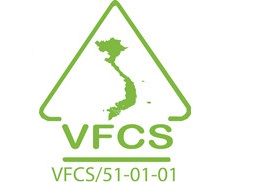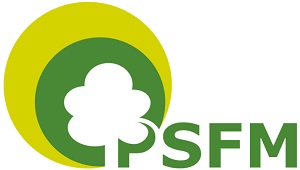XÁC ĐỊNH CARBON LƯU GIỮ CỦA RỪNG LỒ Ô (Bambusa procure A.chev et A.cam) Ở KHU VỰC TÂY NGUYÊN
Từ khóa:
: Carbon,, CO2,, REDD, rừng Lồ ôTóm tắt
Rừng Lồ ô mang lại cho con người nhiều giá trị về kinh tế, văn hóa và cả giá trị môi trường. Nhưng nhận thức của các nhà quản lý cũng như cộng đồng cho rằng nó có ít giá trị và đang chặt phá để chuyển đổi mục đích sử dụng đất và khai thác quá mức. Đặc biệt, trong giai đoạn hiện nay khi vấn đề dân số gia tăng, thay đổi cơ cấu cây trồng, nhu cầu đất cho sản xuất nông nghiệp ngày càng tăng nên việc chặt phá rừng tre nứa, Lồ ô để chuyển đổi mục đích như trồng cao su, cà phê hoặc trồng các loại cây nông nghiệp khác làm cho diện tích rừng Lồ ô ngày một giảm đi. Sự tàn phá diện tích rừng nói chung và rừng tre nứa Lồ ô nói riêng, không những gây mất cân bằng sinh thái ở nước ta mà còn làm giảm khả năng hấp thụ CO2 và gián tiếp làm tăng thêm lượng khí CO
2 phát thải vào khí quyển, làm cho biến đổi khí hậu toàn cầu tăng nhanh. Vì vậy, một trong những cách thức quản lý bền vững loại rừng này để nhằm phát triển kinh tế, văn hóa thẩm mĩ song song với vấn đề bảo vệ môi trường đó là tính được giá trị hấp thụ CO 2 của loại rừng này để tham gia chương trình REDD. Qua kết quả nghiên cứu cho thấy carbon được lưu giữ chủ yếu trong thân cây Lồ ô khí sinh và chúng có quan hệ chặt chẽ với nhân tố tuổi của cây.
Ngoài ra, chúng còn có mối quan hệ chặt chẽ với khối lượng sinh khối khô của thảm mục, cây chết. Lượng CO2 hấp thụ trong lâm phần Lồ ô còn phụ thuộc vào các nhân tố như mật độ cây/ha và đường kính bình quân. Ở cấp đường kính trung bình 3cm và mật độ 3500 cây/ha sẽ hấp thụ được 601 tấn CO2/ha. Và ở cấp đường kính trung bình 9cm và mật độ 16500 cây/ha sẽ hấp thụ được 1880 tấn CO2/ha.
Tài liệu tham khảo
1. Arun Jyoti Nath, R.., Ashesh, 2015. Managing woody bamboos for carbon farming and carbon trading. Global Ecology and Conservation, p. 662.
2. Banik, R.L., 2000. Silviculture and Field-Guide to Priority Bamboos of Bangladesh and South Asia. Government of the people’s Republic of Bangladesh, Bangladesh Forest Research Institute, Chittagong, p. 82.
3. Hunter, I.R., Wu, J., 2002. Bamboo Biomass. INBAR, Beijing.
4. Holttum, R.E., 1958. The Bamboos of the Malay Peninsula, Vol. 16. The Gardens’ Bulletin, Singapore.
5. INBAR, 2006. The partnership for a better world-strategy to the year 2015. Beijing, China.
6. INBAR, 2010. Bamboo and climate change mitigation: a comparative analysis of Carbon sequestration, Beijing, China: International Network for bamboo and Rattan (INBAR), Technical Report No. 32. p. 47.
7. Lobovikov, M., Schoene, D., Yping, L., 2012. Bamboo in climate change and rural livelihood. Mitig. Adapt. Strateg. Glob. Change 17, 261 - 276.
8. Maoyi, F., Banik, R.L., 1996. Bamboo production systems and their management. In: Rao, I.V.R., Sastry, C.B., Widjaja, E. (Eds.), Bamboo, People and the Environment, Vol. 4. INBAR, EBF, IPGRI, IDRC, pp. 18 - 33.
9. Neeff, T., Francisco, A., 2009. Lessons from carbon markets for designing an effective REDD architecture. Clim. Policy 9, 306 - 315.
10. Soderstrom, T.R., Ellis, R.P., 1988. The woody bamboos (Poaceae: Bambusoideae) of Sri Lanka. In: A Morphological-Anatomical study. Smithsonian Contributions of Botany, Vol. 72. Smithsonian Institution Press, Washington, D.D., pp. 30 - 36.
11. Sungkaew, S., Stapleton, C.M.A., Salamin, N., Hodkison, T.R., 2009. Non-monophyly of the woody bamboos (Bambuseae; Poaceae): a multi-gene region phylogenetic analysis of Bambusoideae. J. Plant Res. 122, 95 - 108.












